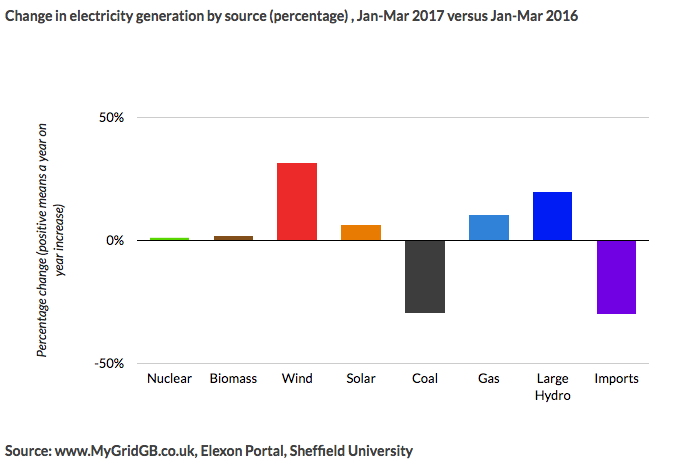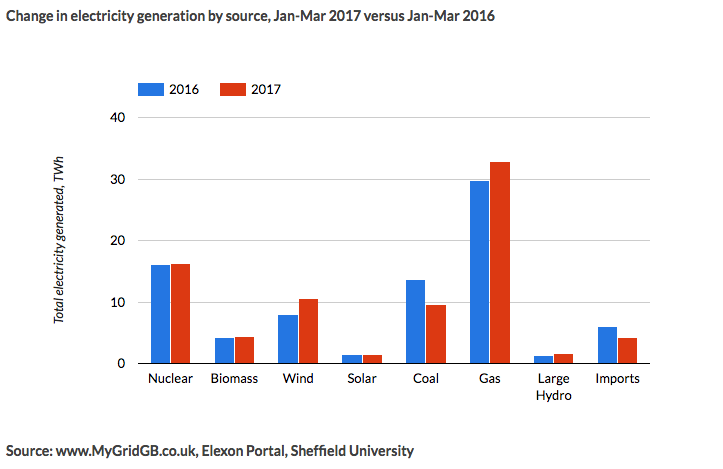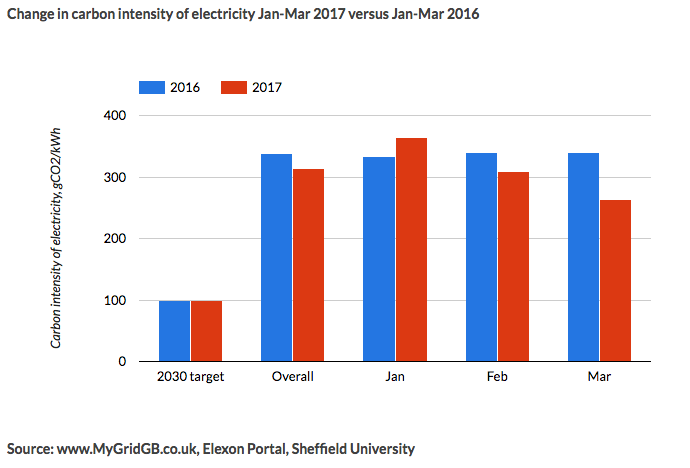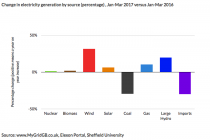I have just released a new page on the MyGridGB website which tries to chart how electricity generation is changing year on year. It can be found here.
These charts tell some important stories about electricity in Britain and how fast it is changing. I now describe three biggest stories in the data and my predictions for 2017.
The decline of coal
The amount of coal used for electricity was 30% lower in Q1 2017 than it was in Q1 2016 despite there being very little difference in our demand for power. Coal power stations are rapidly being decommissioned and being replaced by renewables and gas.
My prediction: coal power stations will be switched off several times over the coming months (April onwards) when demand is low. The amount of times this happens will be affected by the global price of coal and gas which affects the choice of power stations to use.

The rise of intermittent generators
Wind and solar continue to grow and 2017 also saw an increased in metered generation from hydroelectric dams. Overall, low carbon renewable generation was 26% higher in Q1 2017 than it was in Q1 2016. The early signs from 2017 are that wind has overtaken coal to be the third biggest provider of electricity in Great Britain. In fact, wind turbines generated nearly 60% of what nuclear power stations provided.
My prediction: 2017 will see wind overtake coal as the third biggest provider of electricity in Great Britain
Note that my values include an estimate for so called “embedded wind” turbines. Embedded wind refers to smaller turbines which are not included in the Elexon Portal data which I use for this website or gridwatch. At the time of writing, I estimated that around 30% of the installed wind capacity in Great Britain is embedded.

Falling carbon emissions
The carbon intensity of electricity, namely the volume of greenhouse gases emitted for each kWH of electricity, was 7% lower in Q1 2017 than it was in Q1 2016. This is mostly attributable to the fall of coal and rise of renewables as outlined above.
My prediction: If coal use continues to fall and low carbon imports from France are restored, it is possible that overall greenhouse gas emissions in summer months will fall below 250g/kWh in April or May this year. The only time this has happened before was in August 2016.

Summary
- Low carbon renewable generation from wind, solar and hydro was 26% higher in Q1 2017 than it was in Q1 2016.
- Carbon emissions are around 7% lower in Q1 2017 than they were in Q1 2016.
- Coal power stations provided 30% less electricity in Q1 2017 than in Q1 2016

